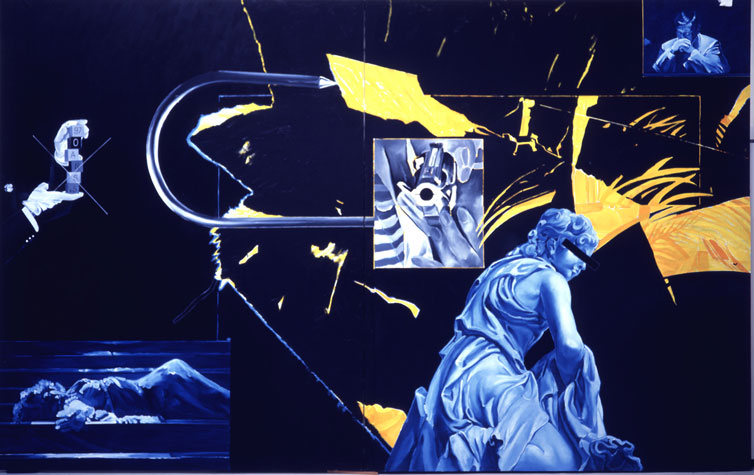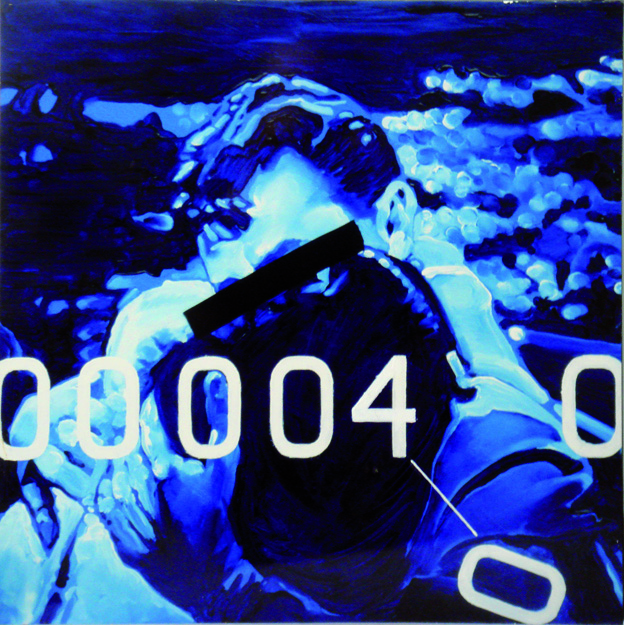Biographical Data
Born in Paris, in 1924. He lives and works in Cachan, near Paris. Jacques Monory studies applied arts at l’École des arts appliqués à l’industrie in Paris (1939-1944). His first individual exhibition takes place in 1952. In 1962 he destroys all his previous work and begins participating in the exhibitions of the Figuration Narrative movement. He is also the author of several books (Deux, 1973; Diamond Back, 1982; Angèle, 2005). In 2005, the Macval museum, near Paris, opens with a retrospective of his work (Détour).
Brief Chronology
Since the 60’s, Jacques Monory has painted large canvases, often divided in different parts as if they were a cinema sequence. He first works on sketches and pictures that he himself takes or either cuts out from magazines, newspapers, or the movies. His subjects are represented on a homogeneous background, saturated by a single dominant color, most frequently blue but sometimes yellow, pink, green or black. He defines himself as a “narrative, emotional” painter. In some of his paintings he puts himself as part of the scene or he discloses the life of people he knows as if it were a personal diary. In other fictions, which he names “thrillered scenarios” he chooses to give a critical view of society, he shows its dark side, the catastrophes, wars, death, and violence. He calls these subjects “colorful wrecks” and says: “Each and everyone of my works are pieces of a film noir movie more or less soaked with monochrome blue and, for a while, with basic Technicolor”. He paints: Les premiers numéros du catalogue mondial des images incurables, Meurtres, Énigmes, Noir, Toxique, Métacrime, Opéras glacés, Baisers, Nuit, La vie imaginaire de Jonq’Erouas Cym, Les Vitrines, etc. He also makes movies (Ex, 1968; Brighton Belle, 1974; La Voleuse, 1985).
P.L.T.
www.jacquesmonory.com
www.pallade.net

Ang. N° 5, ref. 991, 1997, Oil on canvas and plywood (lower left side), 250 x 390 cm / 98,4 x 153,5 in.
